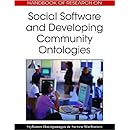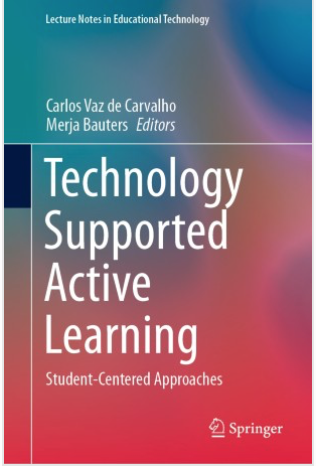
Knowledge creation in organisations
December 29, 2007Reading a book:
Knowledge emergence. Social, Technical and Evolutionary Dimensions of Knowledge Creation
Eds. I.Nonaka & T.Nishiguchi
Oxford University Press, 2001.
Nonaka, Konno & Toyama:
What knowledge management should achieve is not a static management of information or existing knowledge, but a dynamic management of the process of creating knowledge out of knowledge.
Tacit knowledge is hard to verbalise, and is deeply rooted in an individual’s actions and expertise, as well as ideals, values or emotions. Explicit knowledge can be expressed formally and transmitted across individuals. Understanding the reciprocal relationship between tacit and explicit knowledge and social knowledge conversions with this knowledge between individuals is the key of understanding knowledge-creating processes.
Four modes of knowledge conversion are:
– Socialization (tacit -> tacit) consists of tacit knowledge accumulation through physical proximity, wandering outside and wandering inside for collecting social information, and transfer of tacit knowledge;
– Externalization (tacit -> explicit) is creating concepts through abductive thinking, the use of metaphors for concept creation, the use of models, diagrams or prototypes to articulate tacit concepts;
– Combination (explicit -> explicit) consists of acquisition and integration, which involves justification of knowledge and negotiations of finding agreement, synthesis and processing at presentations and meetings, and dissemination that is supported with communication networks;
– Internalization (explicit -> tacit) consists of personal experience and acquisition of real world knowledge through learning by doing, simulations and experimenting, and by virtual world knowledge acquisition.
The interaction between tacit and explicit knowledge moves up to the ontological levels eg. individual -> group -> organisation -> between organisations. Organisational knowldge creation is a spiral process that crosses sectional, departmential, divisional, and organisational boundaries.
Ba, a Japanese term refers to a physical, virtual and/or mental space shared by two or more individuals or organisations. The nature of ba will condition social relationships among these social units and hence have a determining influence on the scale and scope of knowledge creation. The role of management in the knowledge-creation process should be to design and/or facilitate the emergence of appropriate ba, rather than directly intervene in the knowledge-creation process.
Ba is a time-space nexus, a locationality that simultaneously includes time and space. To participate in ba means to get involved and transcend one’s own limited perspective or boundary. Knowledge is embedded in ba, if knowledge is separated from ba it turns into separate information, which can be communicated independently from ba.
I wonder what are the relationships of ba and forms of intersubjectivity?
Important aspects in ba management are:
– Providing knowledge vision that transcends the boundaries of existing products, divisions, organisations, and markets. Knowledge vision defines, what kind of knowledge the company should create and in what domain, it also defines value systems that evaluates, justifies and determines the quality of knowledge the company creates.
– Building and energizing ba by providing space, utilizising created ba dynamically, allowing creative autonomy, causing creative chaos that breaks down routines, habits and cognitive frameworks, facilitating the redundancy of information, which is needed to perceive what the tacit knowledge of the members of the organisation is, and to which direction they should be constructing the knowledge.
Krogh, Ichijo & Nonaka:
Care can facilitate organisational knowledge development by nurturing trust among the employees. Knowledge-creation depends on whether there is low or high care and whether there is creation of individual or organisational knowledge. In low care organisations individuals seize knowledge on their own and do not share with the others, social knowledge of the organisation is explicit and buereaucratic, often not understood by employees. In high care organisations individuals in social networks share tacit knowledge both at individual and organisation level and understand the knowledge.
M.A. Cusumano:
Microsoft promotes both creativity, a key factor of innovative knowledge creation, and structure. Creativity is related with flexibility and entrepreneurial spirit of the hacker culture. The basic elements of their approach are to continuously synchronise what employees are doing individually and as members of parallel teams and to periodically stabilize the evolving product features by specifications as the project proceeds.
G. Michaelis:
Cooperative processes, that is communicative relations, bind participants to each other and with the actions they are performing. The success of cooperative processes depends on the effectiveness of actors and also of their capability to switch from one position to another: from action performer to the one who requests action.
– Participants in a cooperative process change over time
– Each participant switches between acting and communicating
– Each participant is engaged at specific time moment into different cooperation types depending on her position among other cooperative participants
– Actors switch between different forms of cooperation and between different types of knowledge transformations
– Synchronous and asynchronous forms of collaboration are used
According to Brown and Duguid (1994), during the evolution of cooperative processes, each of their components continuously moves from center to periphery and in the reverse direction. Effective border resources, helping the users to switch among cooperative processes without losing awareness of the context where they are cooperating, are needed.
They use cooperation and collaboration terms differently from CSCW and CSCL traditions where cooperation is dividing tasks and roles when doing something and collaboration is shifting the tasks and roles dynamically between people during the activity.
Another thought is can we describe it as Engeström’s knotworking?
The nature of these border resources is still a bit unclear. Is it the same as boundary objects? Boundary objects are objects that are both plastic enough to adapt the local needs and constraints of several parties employing them, yet robust enough to maintain a common identity across sites (Star, 1989).
Is cooperation same as boundary practices? Boundary-crossing as participation takes place in the form of brokering in which people use their common membership in various activity systems (networks, projects, learning situations) to coordinate perspectives, to trasfer ideas or to introduce elements of one practice into another (Wenger, 1998). Wenger also distinguishes boundary practices, which establish boundary encounters on a regular basis and build an ongoing forum for mutual engagement.
D.E. Westney:
She discusses several cross-border knowledge creation processes within multinational enterprises in terms of location (generic or location-specific) and nature (tacit or explicit) of knowledge.
She identifies 4 distinct cross-border knowledge-creation processes:
– Combining centrally located generic knowledge with locally dispersed location-specific knowledge:
– Combining generic knowledge from tow or more locations
– Joint cross-border interactions using location-specific knowledge to generate generic knowledge or to transfer knowledge to other locations
– Using analogy to apply location-specific knowledge from one location to another
The geographic dispersion of the tacit generic knowledge is more important motivator for the R&D than explicit generic knowledge.
K. Yasumoro & E. Westney:
Japanese companies use front-line management, where factories, R&D labs, sales and marketing organisations are valued as the key centres of knowledge creation. Key aspects of this approach include the diffusion of significant levels of discretion, response capability, and problem-solving responsibilities to front-line employees and an egalitarian work culture that minimizes differences across organisational statuses and ranks.
T.Nishiguchi:
Proposes a model of knowledge creation based on the coevolution of interorganisational relations. Exploitation and symbiosis between organisations are perceived not as separate systems but as interwined and nested within a twister.Knowledge creation emerges through the destabilizing and dynamic interactions between the two systems. In this view organisations are seen as entities with their own perception, consciousness, and memory whose interactions with other organisations can be driving force that creates and maintains order within the social and economic system.
Distinguishes two systems of interorganisational relations; Exploitation system and Symbiosis system.
Exploitation system:
Decision-making: central and unilateral
Skills: functional
Information: the result
Information-processing: serial, sequential and delineative
Control structure: Arm’s lenght
Safeguard: bidding, multiple sourcing, short term contracts
Requirements: bargaining
Objectives: distribution, survival
Attributes: Dichotomous, antagonistic, win-lose, dead end, mechanistic, homeostasis
Symbiosis system:
Decision-making: constitutent, synergetic, self-reflective, retrospective
Skills: relational
Information: process
Information processing: parallel, concurrent
Organisation: boundaryless, crossfunctional
Control structure: Clustered
Safeguard: single or parallel sourcing, risk-sharing, profit-sharing
Requirements: commitment
Objectives: cocreation, coadvancement,
Attributes: permeable, adsorptive, win-win, organic, open-end, hoeochaos
Some relevant papers:
Canadian Journal of Learning and Technology
Volume 30(1) Winter / hiver 2004
The Framework of Knowledge Creation for Online Learning Environments
Hsiu-Mei Huang
Shu-Sheng Liaw
Organizational Knowledge Acquisition
Brian R. Gaines
Managing Existing Knowledge is Not Enough: Knowledge Management Theory and Practice in Japan
Katsuhiro Umemoto









[…] blog is about virtual and augmented spaces and our attempts of taming them for education « Knowledge creation in organisations knowledge management in organisations December 30, 2007 Was reading the book Knowledge […]